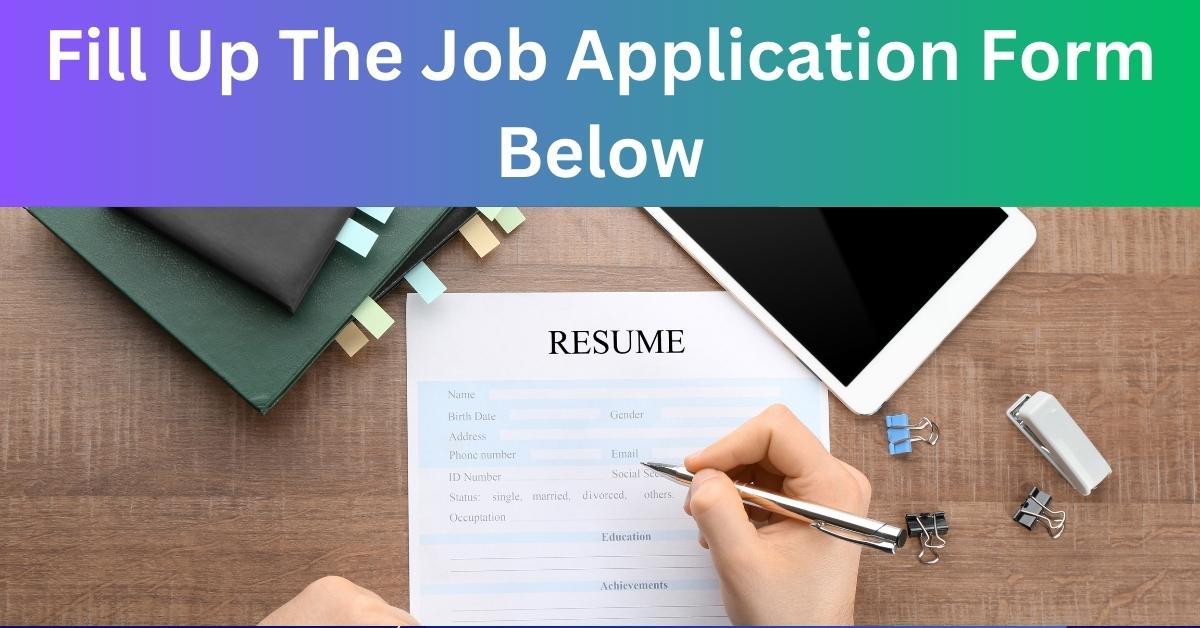Hope you read all the details carefully about the job? Now fill up the form carefully. Please note we don’t take any money to give you a job. Please be aware of such scams.
Understand the Job and Company Before applying, learn about the job, company, and industry. What skills and background do they want for this role? What is their culture and mission? Understanding the details will help you emphasize relevant details in your materials and show you researched the role and company.
Read the Instructions Carefully
Whether applying online or on paper, read the instructions closely before starting. What sections, questions, and documents do they require? Are there page limits or preferred formats? Missing information or not following directions could disqualify you. Following directions shows you can follow instructions, which is critical for success at most jobs.
Have All Needed Information Available
Before starting applications, compile information to save time, including:
- All previous jobs: Company names, locations, titles, dates
- Education: Schools, subjects studied, dates, degrees earned
- Skills: Technical, language, analytical, certifications, training
- Awards and leadership roles
- Contact info: Full name, address, phone, email
- ID numbers: Social Security, driver’s license
Fill Out All Sections
Don’t skip optional sections unless truly not applicable. Even sections that ask you to re-enter resume details allow you to include helpful keywords.
Proofread Carefully
Before submitting, carefully proofread all materials for:
- Accuracy: Do all details match your resume?
- Grammar: Fix any typos or errors
- Completion: Did you fully fill out each required section?
Submitting error-free materials shows the care and precision needed for most jobs.
Customize for Each Application
Avoid blasting the exact same application everywhere. Tailor your skills summaries and examples to align closely with each job’s specific duties. Expand examples of your most relevant experience while downplaying less related roles. Show why you’re a great match for their current needs.
Resume Formatting Basics
Resumes showcase experience concisely. Follow these formatting tips:
Length: Typical length by experience level:
- Students/Grads: 1 page highlighting education
- Experienced hires: 2 pages to detail achievements
Margins: Use at least 0.5” margins for white space.
Readability: Use clean 11 point fonts like Arial since small/fancy fonts are hard to read.
Consistency: Keep formatting choices uniform for headings, bullets, etc.
Order: List sections from most to least relevant to the job.
Tailor to the Job
Review the job description. Highlight the key skills, experience and qualifications the employer wants. Identify which credentials you have that make you a strong match. Tailor the resume’s content to closely align with their stated needs. Use facts/data to quantify achievements, focusing most on the abilities they prioritize.
Craft Effective Bullet Points
Replace vague statements like “Responsible for marketing analytics” with bullets quantifying specific accomplishments like “Identified and targeted high lifetime value customer segments boosting retention 28%”. Vivid, results-oriented bullets demonstrate strong capabilities and encourage interviews.
Update Regularly
Update materials regularly even when not job seeking. Add new achievements as they occur. Tweak wording to reflect emerging professional language and terminology. This shows critical currency to hiring managers.
Following these application and resume tips shows your qualifications aligned with what employers want in their next hire. Proper preparation signals the diligence and mindset that leads to superior performance once hired. This will help your application stand out, opening more doors to exciting opportunities.
